Been a while since I’ve dropped a blog post. I shot this video on some riposting options over the summer and figured I’d do a supplement post to dig into things a bit more.
Although parry-riposting in single tempi (so doing it in controtempo) is the ideal for the early-17th Century masters, we do see purely defensive parries become more popular by masters as we travel through the 1600s and into the birth of the smallsword, especially in France. And even for modern practitioners, there’s nothing inherently wrong about utilizing the dui-tempi (two time) version; though, like all things, it does have it’s own unique set of weaknesses that we won’t get into here.
A problem that folks do run into is not landing their ripostes. Sometimes this comes down to not moving in good time (aka, taking too long to riposte) or not in good order (not moving the sword first).
This video covers:
- Direct riposte against the opponent while they’re still in their lunge (00:27)
- Direct riposte as the opponent is recovering into their on-guard stance (01:29)
- Indirect riposte as the opponent recovers and counter-parries (02:55)
- Riposte via transport against an opponent who recovers with a high guard (04:12)
This is not an exhaustive list of riposte options, but it covers a large swath of situations folks will run into.
The Direct Riposte #1

Anezka (right) performs a direct riposte (with blade opposition) against an opponent still in their vulnerable lunge position.
This is the simplest of ripostes and probably what most of us think of when we think of the riposte. To define the direct riposte, this is riposting along the same line as the parry.
For example, if you parry on the inside line (using quarte or terza-quarte), you would riposte also on the inside line, using quarte. This can be done with blade opposition (your blade against theirs) or with detachment (no blade contact). Either way is fine, as long as you’re closing off that inside line.
The direct riposte can be done in two ideal moments:
- At the end of the opponent’s attack when they are still in their lunge posture
- As they recover back into their on-guard stance (Defensive Posture)
Opponent’s are tactically in a weak position at the termination of their attack. They’ve fully invested their blade and body to the attack and your parry as foiled that. And it’s not easy to move out of the lunge even if one is good at it, when compared to other footwork movement. Also, many fencers lunge way too wide and can’t easily recover, making them a sitting duck.
The downside of riposting here is that a solid fencer will have most/all of their high-line covered, leaving not much target to strike. In this case, a direct riposte is probably not your best option (which we’ll go over in a bit). However, against opponent’s who over-expose themselves on the lunge or keep their guard too low, striking when they’re in their lunge position is a golden opportunity for the riposte. Your targets here are the head and upper-torso.
Drill A
| STUDENT | COACH |
|---|---|
| Finds the coach’s blade & advances into measure. | |
| Attacks via cavazione | |
| Parries & ripostes on the same line. | Takes hit. |
The Direct Riposte #2

Anezka (right) performs a direct riposte (with blade opposition) against an opponent as they recover into their on-guard position.
The second opportunity for a direct riposte is as the opponent is recovering into their on-guard stance/Defensive Posture. Often many fencers, upon finishing their attack, will just hop back into guard and not attempt to counter-parry or, at least, cover the line they’re not open on. These fencers are giving you a shiny tempo (opportunity) to strike them as they move back defenseless.
The key here is to riposte as they begin their recovery, so if you start your riposte when they’re already back on-guard, it’s too late. The opportunity is lost. So the timing difference between the first direct riposte and this one is extremely minute and granular. They both begin at the same time. The difference in this second example is the attacker is much faster to recover (or perhaps you prefer to strike them as they’re recovering, so it’s a tactical choice).
Either way, remember the proper order of operation. Always lead with the sword first. If your riposte comes up short, use your body to drive the point home.
Your targets here are the head and upper-torso and mid-torso.
Drill B
| STUDENT | COACH |
|---|---|
| Finds the coach’s blade & advances into measure. | |
| Attacks via cavazione | |
| Parries attack | Starts their recovery without a counter-parry |
| Ripostes along the same line | Takes the hit. |
The Indirect Riposte (Riposte via Cavazione)

Anezka (right) performs an indirect riposte, or a riposte via cavazione, by disengaging around the opponent’s counter-parry to the open line.
Sometimes you run into a very savvy fencer who, upon their attack failing, are quick to recover into their Defensive Posture as well as cover themselves. Against these fencers, you can’t riposte along the same line because they’ll just end up counter-parrying you, leaving you now with the awkward duty of getting the hell out of Dodge.
In this case, your best option is to attack along the line that is now open.
For example, your opponent attacks you on the inside line. You parry and as you extend your arm to riposte, the opponent begins their recovery and covers the inside line with a finding. Instead of trying to brute force your riposte home, it’s easier to perform a cavazione (disengage) to the now wide open outside line and strike the opponent there.
The key here is to disengage to the open line as soon as you feel that lateral pressure from the opponent. If you don’t, there’s a good chance you’ll be counter-parried and then in a tight spot.
What folks often get wrong with this is they don’t lead with the sword, so they end up getting parried (and then struck by the opponent’s counter-riposte), or they get stuck on their opponent’s guard while trying to disengage. Doing this drill alone is a great way to work out bad operations and reinforcing moving in good order of sword, arm, torso, legs.
Drill C
| STUDENT | COACH |
|---|---|
| Finds the coach’s blade & advances into measure | |
| Attacks via cavazione | |
| Parries & extends the sword to begin their riposte. | Attempts to counter-parry as they recover |
| Yields to the lateral pressure of the counter-parry by performing a cavazione to the open line and finishing their riposte. | Takes the hit. |
Riposting Via Transport

Anezka (right) performs an riposte via transport.
Lastly, sometimes you run into an opponent who, upon completing their attack, quick to return into their on-guard stance while keeping their guard high (a la Fabris). This makes direct ripostes and indirect ripostes very difficult because they’re using the cone of defense from their guard, the threat of their point, and the withdrawal of targets as a combined defense. It’s tough!
Against these opponent’s, the high line is very difficult to get to. The low lines are open, but striking them directly is dangerous because the target is far away and the opponent’s blade is still free to strike you. So when riposting, you need to find a way of controlling the opponent’s blade while still accessing the open lines. In this scenario, using a transport can accomplish both.
Transports control the opponent’s weapon while accessing lower targets. Half-transports bring the opponent’s sword point through two lines (usually high & low), and a full-transport brings their point through three lines (for example: from high inside to low inside to low outside).
Drill D
| STUDENT | COACH |
|---|---|
| Finds the coach’s blade & advances into measure | |
| Attacks via cavazione | |
| Parries & extends the sword to begin their riposte. | Recovers with their sword held high and in front of their face (Forward Guard/Offensive Posture) |
| Performs either a half-transport or full-transport and striking below the opponent’s sword. | Column 2 Value 4 |
Option Drill
After practicing each of those drills separately, you can combine them into an Option drill where the coach randomly performs one of their four actions after being parried and the student must properly respond to the stimuli with the right counter-action.
I go more into building simple Option Drills in this post.
A Note on Height/Measure
One thing that affects one’s ability to riposte properly is the measure and this is tightly intertwined with one’s height. If you’re taller than your attacker, and you find that you struggle to get your point online when riposting and instead keep smacking your opponent on the side of the mask or you have to oddly bend your arm and wrist to land the shot, it could be one of two things:
- You may be moving out of order, so you’re lunging before extending the sword
- You’re too close
Either way, the main problem here is your point is well passed your opponent’s head and body to properly land the riposte. So you may need to take a small retreating step with parrying. You want to make this no bigger than you need so when you extend your sword-arm the point is still in front of your opponent’s targets and not slapping them about the face.
If you’re shorter than your attacker, you’re more likely to come up short on your ripostes. In this case, you may need to stand still and hold your ground when parrying or even take a small advance forward while parrying to steal measure and get into your measure for a riposte. Alternately, instead of replying with a step-lunge as you riposte, you may need to utilize a passing lunge to cover more distance.
Regardless of either situation, the blade work shown in this video still applies.
DONATIONS: If you found this post useful, please consider a small donation to my school, so I can continue to produce rapier & other historical martial arts content. Donate at https://www.paypal.com/paypalme/BostonAcademiedArmes.



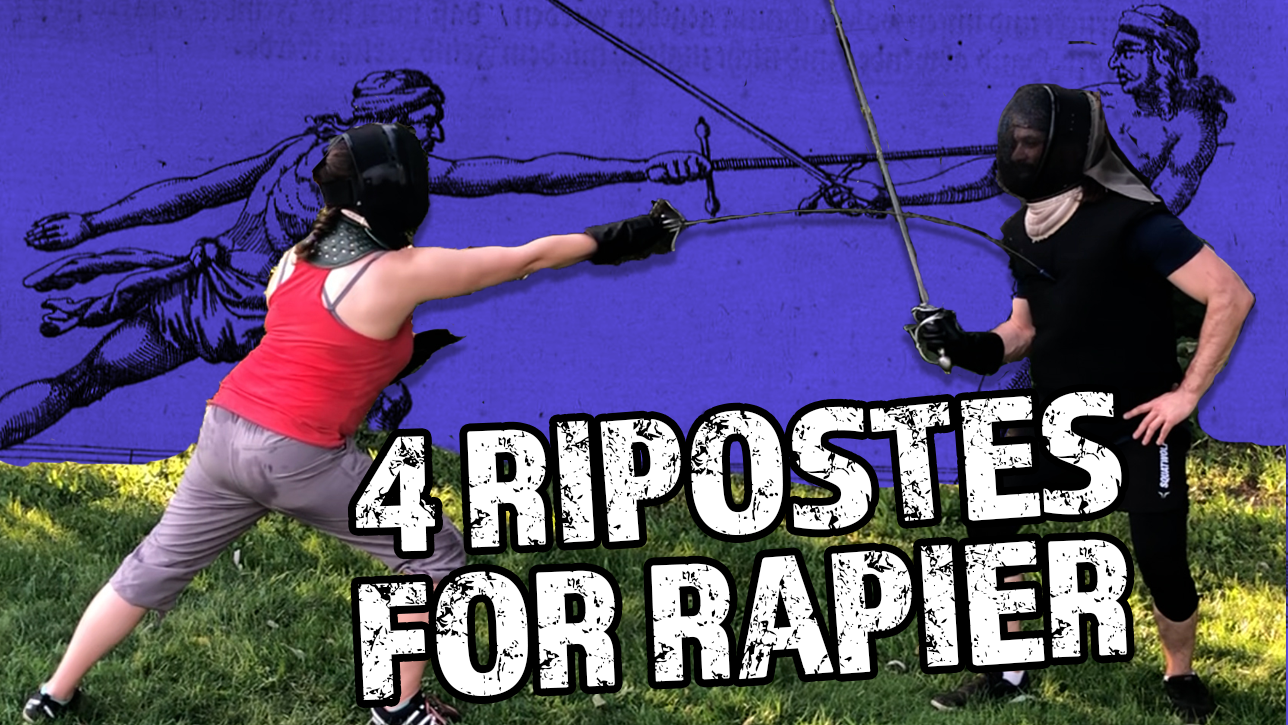
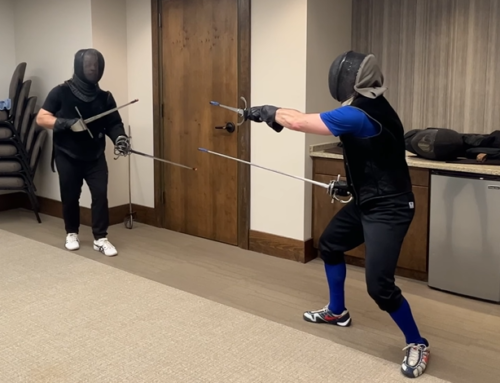
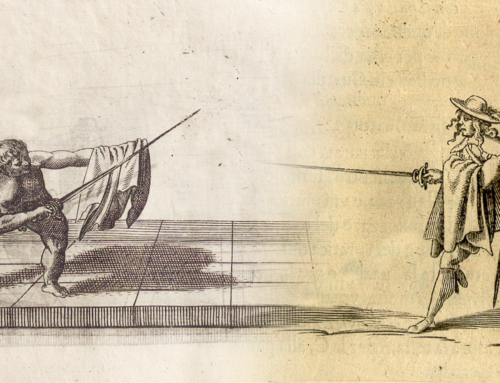

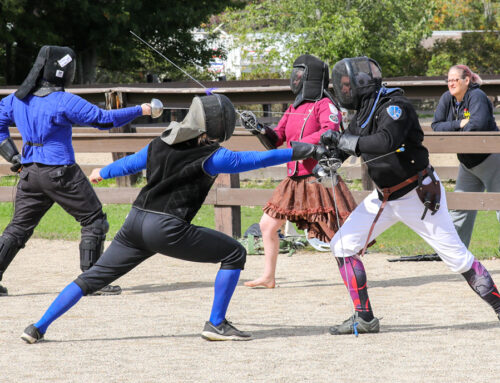

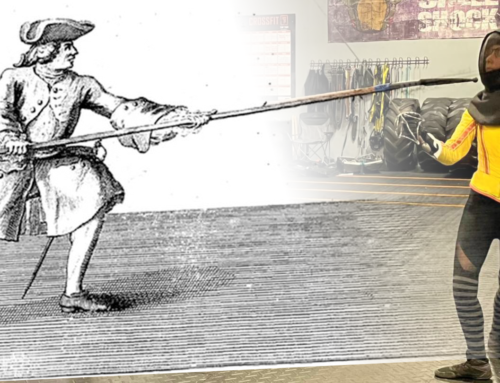
Leave A Comment